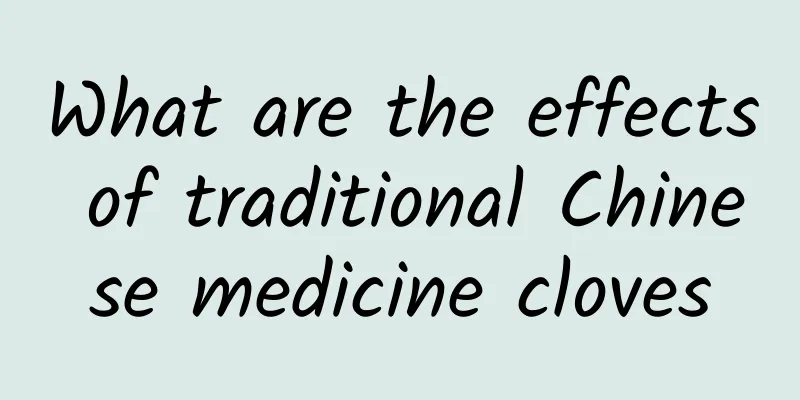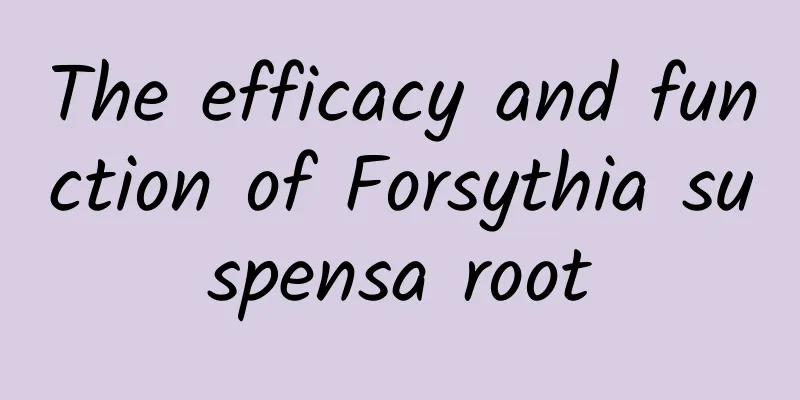The efficacy and function of Jinjile

|
Do you know about Golden Cocksberry? It is a common medicinal material. Generally, Golden Cocksberry is used as raw material in many places. It can also treat many physical diseases. Let’s take a look at the relevant knowledge about Golden Cocksberry. [Alias] Cinchona (Li Chenghu's "Medicinal Plants"). [Source] It is the bark, branch bark and root bark of the red cinchona tree or several other plants of the same genus in the Rubiaceae family. There are several methods of harvesting: in South America, the trees are usually cut down during the rainy season, the bark is stripped, sun-dried or oven-dried, and pressed into flat sheets. The bark rolls into a tube when dry. In Java and India, it is grown by root digging and cutting. The root digging method is to dig out the cinchona tree that has grown for about 12 years with its roots, and peel off the bark or root bark; the branch cutting method is to cut the tree down from the ground, peel off the bark, and let adventitious branches grow at the base of the remaining trunk, and leave 1 to 2 branches to grow. After the branches grow up, the bark is peeled off and dried in the sun or in an oven. The main method adopted in our country is branch pruning. [Original form] ① Red cinchona tree, also known as: red cinchona tree, red quinine tree. [Habitat distribution] Mainly produced in Indonesia, India and South America. It is also produced in Yunnan, Guangxi and Taiwan in my country. 【Properties】 In the form of rolls or rectangular sheets. The rolled ones are about 20 cm long and 25 mm in diameter. The surface is brown-gray or reddish-brown, with gray lichen patches and vertical wrinkles. The older bark has red wart-like protrusions and occasional small transverse cracks; the inner surface is brown-red and fibrous. The broken surface is flat on the outside and fibrous on the inside. The flakes are about 20 cm long, 5 to 10 cm wide and up to 2 cm thick. The outer surface is uneven, rust-red, with longitudinal ridges and red wart-like protrusions; the inner surface is brick red. The smell is weak and the taste is bitter. The root bark is often a twisted roll, 2 to 7 cm long, with similar inner and outer surfaces in color, but a rough, scaly appearance. [Chemical composition] The trunk bark, root bark, branch bark and seeds of the golden cinchona tree contain about 26 kinds of biota, collectively known as golden cinchona biota. Among them, quinine is the most abundant and the most important in medicine, followed by cinchona, cinchonidine, quinidine, etc. The rest are found in very low rates in the bark. Most of them are quinoline derivatives, and a few are indole derivatives. Among the quinine alkaloids, many are stereoisomers of each other, such as quinine and quinidine, cinchonine and cinchonidine, cinchotine and cinchamidine, epiquinine and epiquinidine, hydroquinine and hydroquinidine, etc. In addition, there are cinchonaline, quinacrine, cupric resin, quinamine, cinchonamine, quinidone, orexin, as well as erythrine, cinchonaline, methyl cinchonaline, conquinamine, cusconidine, and diconquinine. In addition to biological alkali, it also contains cinnamic acid, quinic acid, cinnamic red, etc. In the bark, the bioalkali is combined with tannic acid and quinic acid. [Pharmacological action] Quinine is an important antimalarial drug that can kill the schizonts of various malarial parasites and terminate the attack of malaria. It is more effective against Plasmodium vivax malaria, but less effective against Malaria malariae and P. falciparum malaria. It cannot eliminate extra-erythrocytic malarial parasites, so it cannot prevent the recurrence of benign malaria; it also cannot eliminate pre-erythrocytic malarial parasites. It also has no effect on the gametocytes of Plasmodium falciparum. To eliminate the source of infection, 8-aminoquinoline drugs must be added. Quinine is usually taken orally in tablet form. For cases of cerebral or other severe forms of malignant malaria, it can be given by injection. It has only a slight excitatory effect on the pregnant uterus; once contractions have begun, the effect becomes more obvious and can strengthen its rhythmic contractions. It can also inhibit the myocardium and is a general protoplasmic poison. Subcutaneous or intramuscular injection can easily cause tissue irritation or even necrosis. 【Nature and flavor】 ① "Compendium of Materia Medica": "Taste is slightly spicy." 【Functions and indications】 Treat malaria and relieve fever. [Usage and Dosage] For oral use: decoct in water, 1 to 2 qian; or grind into powder. 【Note】 Pregnant women should not take this medicine. [Additional prescription] ① For treating malaria: 1 qian of golden cocklebur and 0.5 fen of cinnamon bark. Boil them together and take orally. For a strong person, two cents of Jinjilu can be used. (Supplement to Gangmu) 【Excerpt】 《*Dictionary》 【Source】 Anti-malarial and antipyretic; sobering up and invigorating the spleen The above are some basic functions of Golden Claw introduced to you, as well as the method of eating Golden Claw, so that you will not use it wrongly when eating it, and you can also maximize the value of Golden Claw more correctly. |
<<: The efficacy and function of golden sophora
>>: The efficacy and function of golden cauliflower
Recommend
Snatching cell phones, picking backpacks... There are more conflicts between monkeys and humans, and it’s not just the monkeys’ fault
"Attention, tourists! If you bring glasses, ...
The efficacy and function of papaya branches
There are so many medicinal herbs in the world, a...
The efficacy and function of persimmon flowers
Do you know what persimmon flowers are? If you kn...
The iron tree finally blooms, which is much more difficult than "the iron tree blooms"!
Recently, the news that a very small wild plant s...
A new problem for mankind: the "sin" and "punishment" of space activities
With the development of aerospace technology and ...
The "personalities" of different beans are revealed. From germination to grain formation, every step of growth requires careful care!
Soybeans, mung beans and broad beans are among ou...
Does drinking wolfberry soaked in water replenish kidney yang deficiency?
In ancient times, wolfberry was a treasure. In an...
World Malaria Day | Say no to malaria! Don’t underestimate mosquito bites
This work is original to "Science Populariza...
The efficacy and function of sesame[picture]
The world is full of wonders, and Chinese medicin...
How to use poppy shells
Poppy husks are very unfamiliar to many people, a...
No fetal heartbeat or embryo at 45 days of pregnancy
Anyone who knows a little about pregnancy should ...
Astronomy, the science closest to us and yet farthest away, what is its use?
Produced by: Science Popularization China Author:...
What is the use of drinking tangerine peel and wolfberry soaked in water?
In daily life, drinking some Chinese herbal medic...
World Immunization Day | Salute to “Sugar Pill Grandpa”!
Today is December 15th World Immunization Day Day...
Naked shopping has triggered a new shopping trend. Is the “unpackaged” shopping method reliable?
The piles of paper boxes, tapes, and fillers afte...









